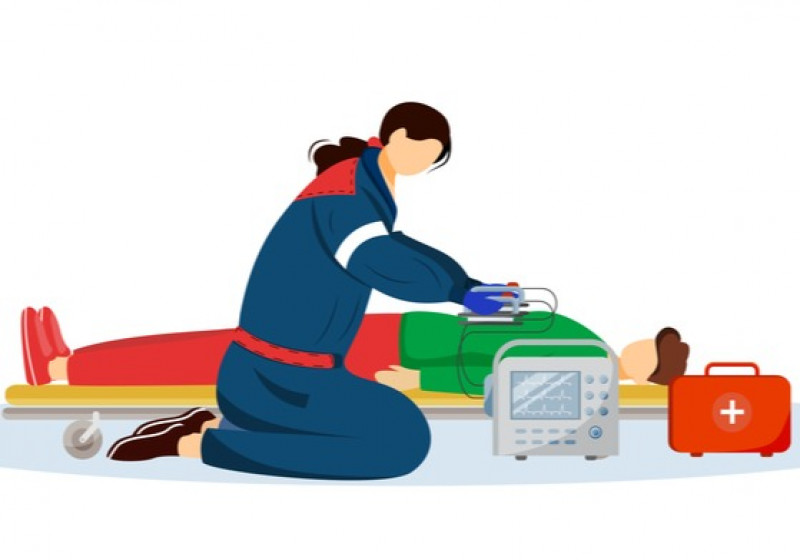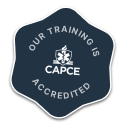
What is an Advanced Emergency Medical Technician?
An advanced emergency medical technician is a healthcare provider whose scope is built off an EMT-Basic scope and expanded for a greater range of treatments and interventions. These treatments allow for AEMTs to have greater autonomy and be more likely to be the provider assuming responsibility for more critical patients. AEMTs have the basic skills required to stabilize and transport patients in settings ranging from non-emergent medical transport to the scenes of medical emergencies.1 Depending on the work environment and day, an AEMT could be driving dialysis patients between their residence and appointments or treating traumatic injuries, administering medications, and driving ambulance lights and sirens to the hospital. AEMTs generally function as part of the Emergency Medical Services (EMS) system under medical direction, though they are also employed in many places where injuries or illness could happen such as a summer camp or a cruise ship. 5
Education Requirements to Become an AEMT
Prior to becoming an AEMT, individuals first must become an EMT-Basic. Becoming an EMT-basic is around 150 hours of school along with cognitive and psychomotor testing. If you are looking for an AEMT program, the Commission on Accreditation of Allied Health Education Programs (CAAHEP) is a good place to start. They provide accreditation for AEMT schools to be allowed to have their programs and keep a database of every accredited AEMT school in every state on their website.2 It is a requirement to go to one of these schools in order to receive your licensure to practice once you complete the program. An AEMT program has around 240 hours of instruction to complete. Other than the coursework, AEMT schools have a component of clinical field training. This training is conducted via simulated scenarios, clinical rotations in an ambulance, or clinical rotations at an emergency department.
Licensing and Certifications
Once a student has completed and passed an accredited AEMT school, they are allowed to test for their EMT certification. All certification of AEMTs in the United States is managed by the National Registry of Emergency Medical Technicians (NREMT). There are two exams in order to obtain an AEMT certification: the cognitive exam and the psychomotor exam. The cognitive exam is a computer adaptive test that tests on the medical knowledge required to be an EMT as well as general EMS operations. If a student fails the exam, they can retest 15 (or more) days after the exam. If the exam is failed 3 times, 36 hours of remedial education is required in order to retake the test. After 6 failures, a student is required to completely retake an AEMT program in order to take the cognitive exam.3 The psychomotor exam is conducted in a standardized manner by the NREMT. This test is in-person (some remote options have been implemented during the coronavirus pandemic) and involves scenarios and testing skills such as oxygen administration or placing a patient in spinal precautions. If a skill is failed, each individual testing site will work with the students on the path to remediation training and retesting. Once a student passes both their cognitive and psychomotor examinations they must apply for a state license to practice in the state they would like to work. This involves the state conducting a background check on the student and verifying they have their AEMT certification from the NREMT.
AEMT Salary
The average salary for AEMTs in the United States is around $21.05/hour. This is a significant pay bump relative to EMT-Basics. The average salary for EMT-basics in the United States is $15.60 per hour.4 AEMT salary can fluctuate a lot depending on experience and role. An entry-level AEMT may make a little less than average, but an experienced AEMT who has gained a leadership or training role at their company may make a lot more. Additionally, being an EMT is a frequently a prerequisite for higher paying jobs within EMS such as a firefighter or a paramedic.
Character/Physical Traits of AEMTs
Being an AEMT is an important job, and it’s important that individuals thinking about the career have an understanding of what the job entails. As AEMTs have a larger stop of medical practice than EMTs, they are often in charge so they must have strong leadership and team management skills. Being an AMET can be stressful, fast-paced, and requires individuals who are comfortable working under pressure. In many emergency situations time is of utmost importance and working efficiently while maintaining a stable headspace is a must. AEMTs also have to have compassion. The goal of AEMTs is to help their patients and individuals with compassion tend to be better providers and find the work more rewarding. AEMTs need to have sufficient physical strength as well. Different roles and positions have different requirements but AEMTs are frequently found moving and lifting patients and bending or crouching to provide appropriate patient care. Lastly, AEMTs need to have problem solving skills. The emergency environment is ever changing and there are new unique patients every day that count on EMTs to have critical thinking skills in order to figure out what is wrong and provide appropriate care.
References
- Advanced emergency medical technicians. National Registry of Emergency Medical Technicians. (n.d.). Retrieved November 16, 2021, from https://www.nremt.org/AEMT/Certification. .
- Esmet. (n.d.). Commission on accreditation. CAAHEP. Retrieved November 16, 2021, from https://www.caahep.org/.
- Cognitive exams - general information. National Registry of Emergency Medical Technicians. (n.d.). Retrieved November 16, 2021, from https://www.nremt.org/Document/cognitive-exams.
- Home. Job Search. (n.d.). Retrieved November 16, 2021, from https://www.indeed.com/career/emt%20basic/salaries.
- U.S. Bureau of Labor Statistics. (2021, September 8). EMTs and paramedics : Occupational outlook handbook. U.S. Bureau of Labor Statistics. Retrieved November 16, 2021, from https://www.bls.gov/ooh/healthcare/emts-and-paramedics.htm.
- Dozens of courses and topics
- State-specific requirements
- We report to CAPCE in real time


